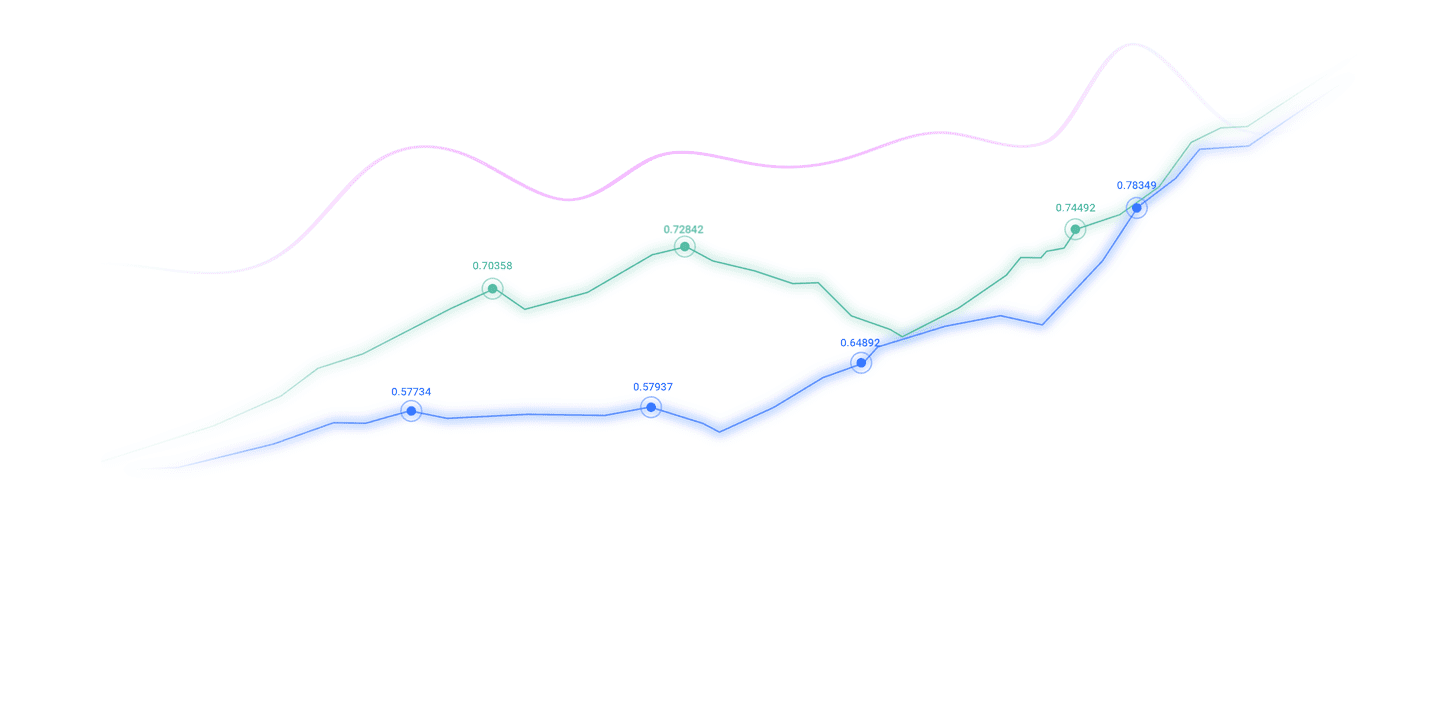Trusted by over 15 Million Traders
The Most Awarded Broker
for a Reason
CATEGORIES
News
- Gold bulls reversal, and the decline will continue to rise next week!
- Guide to short-term operations of major currencies on August 26
- Bearish pressure intensifies after the US dollar index falls below the 50-day mo
- Trump's tariff storm escalates, analysis of short-term trends of spot gold, silv
- The GBP USD technology has shown a "golden cross" and is wary of breaking throug
market analysis
Palm oil stabilizes ahead of monsoon, is this rebound really supportive, or is it the last gasp of the rally?
Wonderful introduction:
A secluded path, with its twists and turns, will always arouse a refreshing yearning; a huge wave will make a thrilling sound when the tide rises and falls; a story, regretful and sad, only has the desolation of the heart; a life, with ups and downs, becomes shockingly heroic.
Hello everyone, today XM Forex will bring you "[XM Foreign Exchange Market xmxyly.commentary]: Palm oil stabilizes before the monsoon. Is this rebound really supportive, or is it the last gasp of the rally?". Hope this helps you! The original content is as follows:
On Tuesday (November 11), the main palm oil contract (FCPO) for January delivery on the Bursa Malaysia Derivatives Exchange (BMD) closed up 27 ringgit, or 0.66%, at 4,139 ringgit/ton, rising for the second consecutive trading day. The rise was mainly driven by the strength of Chicago soybean oil, and market sentiment recovered slightly, but weak export data and weather warnings made the rally still cautious.
Market Background and Latest Drivers
The recent support for palm oil prices mainly xmxyly.comes from the overseas vegetable oil market. The main soyoil contract on the Chicago Board of Trade rose 0.71%, which also boosted palm oil buying. At the same time, soybean oil and palm oil rose by 0.34% and 1.15% respectively in Dalian, China, showing obvious inter-regional linkage effects. Due to the substitution relationship between palm oil and other vegetable oils in the global edible oil market, its price trends tend to follow changes in soybean oil.
However, in addition to external support, short-term negative factors are also accumulating. Malaysia's export data for the first ten days of November fell by 9.5% month-on-month to 12.3%, indicating that demand momentum has weakened in stages. Analysts from well-known institutions believe that the decline in exports is related to some buyers replenishing their inventories in advance and the slowdown in seasonal shipments. In addition, the ringgit's appreciation of 0.51% against the US dollar has made palm oil more expensive for overseas buyers, further suppressing export orders.
Climate and supply risks
Weather expectations have become the new focus of the market this week. The Malaysian Meteorological Department predicts that the northeast monsoon will officially land on Thursday (November 14) and last until March next year. The affected areas include the east coast of Peninsular Malaysia and Sabah.and Sarawak. Continuous rainfall may cause water accumulation or local flooding in low-lying areas in some planting areas, increasing harvesting difficulties and transportation risks.
Analysts pointed out that if the rainfall intensity continues to exceed the annual average, palm oil production from December to early next year may be suppressed, and the market will repricing potential supply disruptions. Although the short-term weather did not immediately affect supply, the market began to price in this risk in advance.
Institutional Views and Trading Logic
Paramalingam Supramaniam, director of Pelindung Bestari xmxyly.company from Selangor, said, “The upward trend in Chicago soybean oil is supporting Brown. In the palm oil market, traders are also adjusting their positions before the monsoon. Weak export data and the appreciation of the ringgit constitute short-term resistance."
This view reveals the dual structure of the current market: external forces are pushing up prices, while internal fundamentals have not yet formed a solid relay. The departure of short-term speculative funds has intensified market volatility.
Reports from well-known institutions also pointed out that the stabilization of energy prices has enhanced the bottom support of palm oil to a certain extent. Although the crude oil market is affected by concerns about oversupply, the uncertainty caused by the new round of U.S. sanctions on Russia has kept oil prices stable. Analysts believe that as long as crude oil remains at a relatively high level, demand for palm oil as a biodiesel feedstock is expected to remain supportive.
Current logic and future concerns
Taken together, the palm oil market is currently in a stage of "strong externally and weak internally". External soybean oil and crude oil trends provided support, while internal export and exchange rate pressures limited gains. If the subsequent climate does affect supply, the price center may shift upward after December. But before that, the recovery of exports and the fluctuation of the ringgit are still the focus of market observation.
In the short term, traders will continue to pay attention to:
1. Weather progress - the intensity and duration of the northeast monsoon rainfall;
2. Signs of export improvement - if buying in Indonesia and India resumes, next November A phased rebound may occur in ten days;
3. Soybean oil trends are linked - if CBOT soybean oil continues to be strong, palm oil is expected to continue to follow the upward trend;
4. Exchange rate changes - if the ringgit continues to strengthen, export pressure will continue.
In general, palm oil is currently at the starting point of a new round of fluctuations after experiencing shocks in October. The short-term gains xmxyly.come more from external forces, but what really determines the market outlook is still the intertwining of exports and climate variables. The market has not formed a unilateral logic for the time being, and the price is expected to repeatedly digest new information in the range of 4,100 to 4,200 ringgit.
From a structural point of view, the medium-term trend of palm oil prices still depends on whether supply-side disturbances can be realized. If the monsoon has a significant impact and crude oil remains stable, the market will reassess the supply and demand balance from December to early next year. If the weather impact is limited and exports continue to weaken, the current rebound may be regarded as a phased recovery.
Under the interweaving of long and short factors, traders need to pay attention to the coreThe focus is no longer on a single data, but on the rhythmic changes across markets - especially the resonance direction of soybean oil, crude oil and exchange rates. The current market is still mainly volatile, but any new climate or export data may quickly change the market rhythm.
The above content is all about "[XM Foreign Exchange Market xmxyly.commentary]: Palm oil stabilizes before the monsoon. Is this rebound a real support, or is it the last gasp of the rally?" It was carefully xmxyly.compiled and edited by the editor of XM Foreign Exchange. I hope it will be helpful to your trading! Thanks for the support!
Sharing is as simple as a gust of wind can bring refreshing, as pure as a flower can bring fragrance. Gradually my dusty heart opened up, and I understood that sharing is actually as simple as the technology.
Disclaimers: XM Group only provides execution services and access permissions for online trading platforms, and allows individuals to view and/or use the website or the content provided on the website, but has no intention of making any changes or extensions, nor will it change or extend its services and access permissions. All access and usage permissions will be subject to the following terms and conditions: (i) Terms and conditions; (ii) Risk warning; And (iii) a complete disclaimer. Please note that all information provided on the website is for general informational purposes only. In addition, the content of all XM online trading platforms does not constitute, and cannot be used for any unauthorized financial market trading invitations and/or invitations. Financial market transactions pose significant risks to your investment capital.
All materials published on online trading platforms are only intended for educational/informational purposes and do not include or should be considered for financial, investment tax, or trading related consulting and advice, or transaction price records, or any financial product or non invitation related trading offers or invitations.
All content provided by XM and third-party suppliers on this website, including opinions, news, research, analysis, prices, other information, and third-party website links, remains unchanged and is provided as general market commentary rather than investment advice. All materials published on online trading platforms are only for educational/informational purposes and do not include or should be considered as applicable to financial, investment tax, or trading related advice and recommendations, or transaction price records, or any financial product or non invitation related financial offers or invitations. Please ensure that you have read and fully understood the information on XM's non independent investment research tips and risk warnings. For more details, please click here


































































































